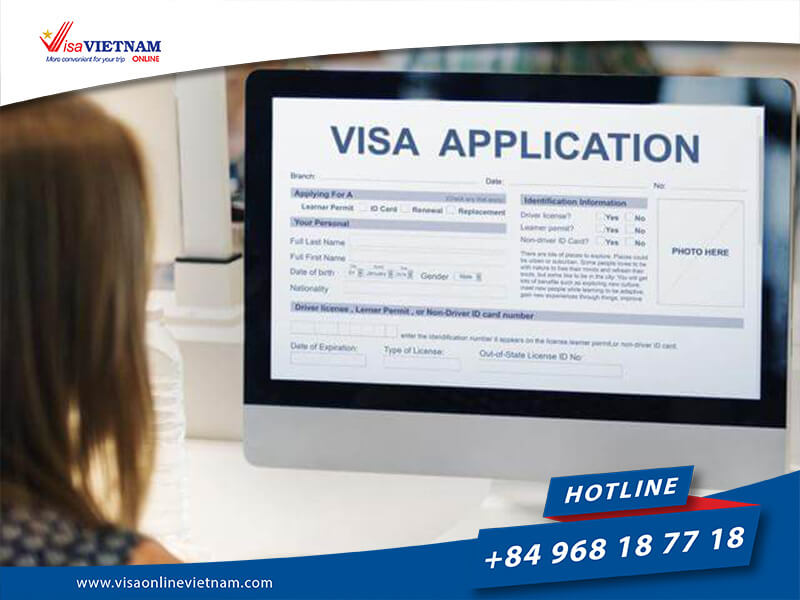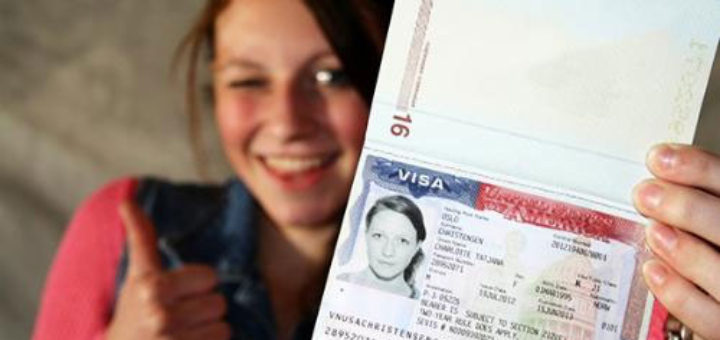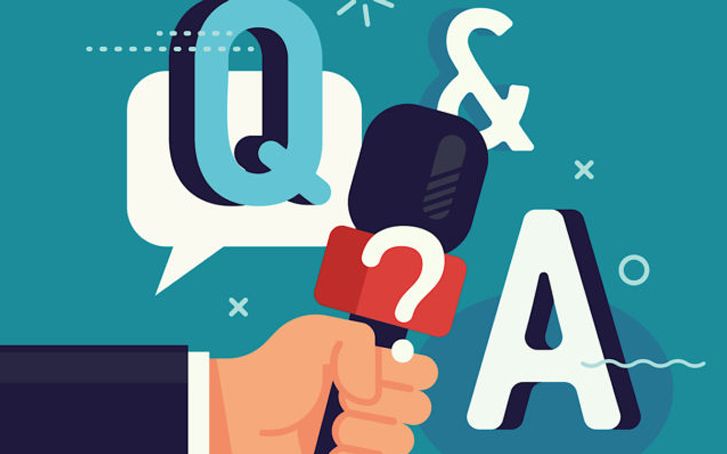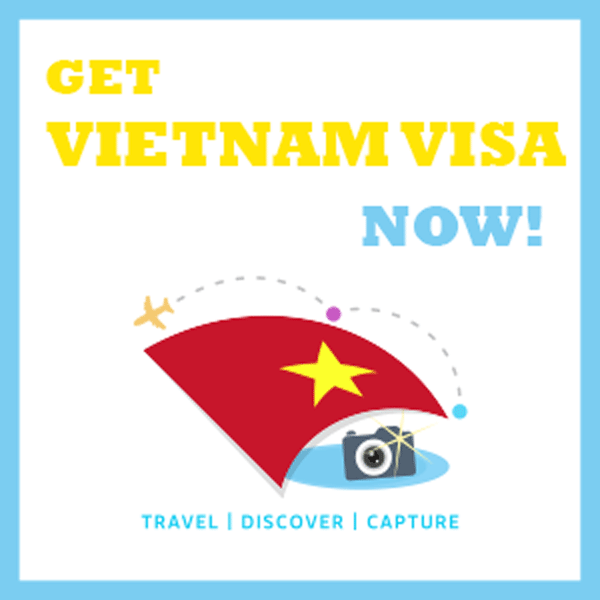If you’re planning to visit Vietnam, one of the first things you’ll need to do is obtain a visa. Fortunately, Vietnam has made the visa process easier by introducing electronic visas (eVisas). This article will provide you with a step-by-step guide on how to obtain your Vietnam eVisa, including information on the official website, eligible countries, cost, processing time, status updates, multiple entry options, extensions, and urgent applications.
![Xin visa du học Mỹ [2020] gồm những bước gì?](https://vietnamembassy-mongolia.org/wp-content/uploads/2020/03/xin-visa-du-hoc-my-2020-vietnamembassy-mongolia.org2_.jpg)
Table of Contents
What is a Vietnam eVisa?
The Vietnam eVisa application process is simple and can be completed entirely online. Applicants need to fill out an online application form, upload a scanned copy of their passport, and provide a digital passport photo. The application fee must also be paid online using a credit or debit card. Once the application is submitted and approved, the applicant will receive their eVisa via email.
The Vietnam eVisa is a convenient option for travelers who want to visit Vietnam for tourism, business, or transit purposes. It eliminates the need to visit a Vietnamese embassy or consulate in person, and the process is much faster than applying for a traditional visa. It also allows travelers to enter Vietnam through any of the 33 designated ports of entry, including major international airports and seaports.
However, it is important to note that not all nationalities are eligible for the Vietnam eVisa. Currently, citizens of 81 countries can apply for the eVisa, including the United States, Canada, Australia, and most European countries. Citizens of other countries may need to apply for a traditional visa through a Vietnamese embassy or consulate.

Additionally, the Vietnam eVisa has some limitations. It is only valid for a single entry and cannot be extended or renewed. If a traveler wants to stay in Vietnam for longer than 30 days, they will need to apply for a different type of visa. The eVisa also does not permit travelers to work or study in Vietnam.
In conclusion, the Vietnam eVisa is an electronic visa system that allows citizens of certain countries to apply for a visa online and receive an electronic travel authorization to enter Vietnam. It is a convenient and fast option for travelers who want to visit Vietnam for tourism, business, or transit purposes. However, it has some limitations and not all nationalities are eligible for the eVisa.
How to Apply for a Vietnam eVisa?
To apply for a Vietnam eVisa, follow these steps:
- Visit the official website: The official website for Vietnam eVisas is https://evisa.xuatnhapcanh.gov.vn/. Make sure to use this website to avoid scams.
- Fill out the application form: Provide all the required information, including passport details, personal information, and travel plans. Make sure to double-check all the information before submitting the form.

- Pay the fee: The fee for a Vietnam eVisa ranges from $25-$50, depending on your nationality. You can pay using Visa, MasterCard, or UnionPay.
- Receive your eVisa: If your application is approved, you’ll receive your eVisa via email within three business days. Print out a copy of the eVisa and carry it with you when you travel to Vietnam.
Eligible Countries for Vietnam eVisas
The Vietnam eVisa is available to citizens of over 80 countries, including the United States, Canada, Australia, the United Kingdom, and most European nations. You can check if your country is eligible for a Vietnam eVisa on the official website.
Vietnam has introduced eVisas to simplify the visa application process for foreign travelers. An eVisa is an electronic visa that allows travelers to enter Vietnam for tourism, business, and other purposes for up to 30 days. The cost of Vietnam eVisas varies depending on the type of visa, nationality of the traveler, and processing time.
The most common type of eVisa for Vietnam is the tourist visa, which is valid for 30 days and allows travelers to enter Vietnam for tourism purposes. The cost of a Vietnam tourist eVisa varies depending on the nationality of the traveler. For citizens of the United States, the cost of a Vietnam tourist eVisa is $25, while citizens of Canada and the United Kingdom pay $30. Citizens of other countries may pay different fees, and the cost can be checked on the Vietnam eVisa website.
In addition to the cost of the visa itself, there may be additional fees for processing and service charges. These fees are also dependent on the processing time chosen by the traveler. The faster processing time, the higher the fee. For example, a standard processing time for a Vietnam tourist eVisa is three business days and costs $25. An expedited processing time of one business day costs $50.
It is important to note that eVisas are only available for certain entry points in Vietnam. Travelers must enter through one of the designated entry points, which include international airports, land border crossings, and seaports. If the traveler enters through a different entry point, they may be denied entry into the country.
Overall, the cost of Vietnam eVisas is relatively affordable compared to traditional visa application processes. However, travelers should be aware of the additional processing and service fees and the limitations on entry points. It is recommended to apply for the eVisa well in advance of the travel date to ensure sufficient time for processing and to avoid any potential issues with entry into Vietnam.

Processing Time for Vietnam eVisas
Vietnam eVisa is an electronic travel authorization that allows foreign visitors to enter Vietnam for tourist or business purposes. One of the important factors that applicants need to consider when applying for an eVisa is the processing time. The processing time refers to the time it takes for the Vietnam Immigration Department to review and approve an eVisa application.
The processing time for Vietnam eVisas varies depending on the type of visa, the nationality of the applicant, and the workload of the Immigration Department. Generally, the processing time for a Vietnam eVisa ranges from 3 to 5 business days, although some applications may take longer to process.
For some nationalities, the processing time for a Vietnam eVisa may be longer due to additional security checks that need to be conducted. In some cases, applicants may be required to provide additional documentation or attend an interview to support their application, which can also increase the processing time.
To ensure that the processing time for a Vietnam eVisa is as short as possible, applicants should ensure that they submit a complete and accurate application. This includes providing all required information, such as personal details, travel plans, and supporting documents, as well as ensuring that all information is correct and up-to-date.
In addition, applicants should allow sufficient time for their application to be processed before their intended travel date. It is recommended to apply for a Vietnam eVisa at least 2 weeks before the planned travel date to allow for any potential delays or issues that may arise during the processing of the application.
In some cases, applicants may be able to expedite the processing of their Vietnam eVisa by paying an additional fee for expedited processing. This option is typically available for urgent travel situations or for applicants who require their visa within a specific timeframe.
In conclusion, the processing time for Vietnam eVisas can vary depending on several factors, including the type of visa, nationality of the applicant, and workload of the Immigration Department. To ensure that the processing time is as short as possible, applicants should submit a complete and accurate application and allow sufficient time for processing before their intended travel date. Expedited processing may also be available for urgent travel situations or for applicants who require their visa within a specific timeframe.
How to Check Your Vietnam eVisa Status
After submitting your Vietnam eVisa application, you can check the status online by visiting the official website and entering your application reference number and email address. The status will show if your application is being processed, approved or rejected.
Vietnam eVisa is an electronic visa that allows foreign nationals to enter Vietnam for tourism, business, or transit purposes. One of the advantages of Vietnam eVisa is its multiple entry options, which provide greater flexibility for travelers. Here are the different types of multiple entry options available for Vietnam eVisas:
- 30-day multiple entry: This option allows travelers to enter and exit Vietnam multiple times within a 30-day period from the date of the first entry. This option is suitable for travelers who plan to make short trips to neighboring countries during their stay in Vietnam.
- 30-day multiple entry with a stay of up to 30 days: This option allows travelers to enter and exit Vietnam multiple times within a 30-day period from the date of the first entry, with a maximum stay of up to 30 days per entry. This option is ideal for travelers who need to make frequent trips in and out of Vietnam for business purposes.
- 90-day multiple entry: This option allows travelers to enter and exit Vietnam multiple times within a 90-day period from the date of the first entry. This option is suitable for travelers who plan to stay in Vietnam for an extended period or need to make multiple trips in and out of Vietnam for tourism or business purposes.
- 90-day multiple entry with a stay of up to 90 days: This option allows travelers to enter and exit Vietnam multiple times within a 90-day period from the date of the first entry, with a maximum stay of up to 90 days per entry. This option is ideal for travelers who plan to stay in Vietnam for a longer period, such as for study or work purposes.
To apply for a Vietnam eVisa with multiple entry options, travelers need to follow the same application process as for a single-entry visa. This includes filling out an online application form, submitting supporting documents, and paying the visa fee. Once approved, travelers will receive an electronic visa via email, which they can print and present upon arrival in Vietnam.
In conclusion, the multiple entry options for Vietnam eVisas provide greater flexibility for travelers who need to make multiple trips in and out of Vietnam for various purposes. By choosing the appropriate multiple entry option, travelers can save time and money on visa applications and enjoy a hassle-free travel experience in Vietnam.
Extending Your Vietnam eVisa
If you are planning to visit Vietnam, you may need to apply for an eVisa, which is an electronic travel authorization that allows foreign nationals to enter Vietnam for tourism, business, or medical purposes. The eVisa is a convenient and efficient way to obtain travel authorization, as it can be applied for online and does not require a visit to the embassy or consulate.
However, there may be instances where you need to extend your eVisa, such as if you have unexpectedly extended your stay in Vietnam or if you have a change of plans. In such cases, it is important to know the process for extending your Vietnam eVisa.
First, it is important to note that not all eVisas can be extended. Only certain types of eVisas, such as the eVisa for tourism and the eVisa for business, can be extended for an additional 30 days. The eVisa for medical purposes, on the other hand, cannot be extended.

To apply for an eVisa extension, you will need to visit the Vietnam Immigration Department website and fill out the eVisa extension application form. The form will require you to provide your personal information, your current visa information, and your reason for requesting an extension.
After submitting the application, you will need to pay the extension fee, which varies depending on the type of eVisa and the length of the extension. The fee can be paid online using a credit card or through a bank transfer.
Once your application is processed and approved, you will receive a confirmation email and a new eVisa with the extended validity. It is important to note that you should apply for an eVisa extension at least seven days before your current visa expires, as processing times can vary and you do not want to risk overstaying your visa.
In summary, if you need to extend your Vietnam eVisa, you should check if your eVisa type is eligible for an extension, fill out the eVisa extension application form on the Vietnam Immigration Department website, pay the extension fee, and wait for the approval and issuance of your new eVisa. By following these steps, you can extend your stay in Vietnam and avoid any unnecessary complications.
Vietnam eVisa is an electronic visa system that allows foreign citizens to apply for a visa to enter Vietnam online. The eVisa is valid for 30 days, and it can be used for tourism, business or visiting relatives. The application process is simple and straightforward, but there may be situations where travelers need to expedite their visa applications due to unforeseen circumstances or urgent travel plans. In these cases, urgent applications for Vietnam eVisas are available to help travelers get their visas in time for their trips.
To apply for an urgent Vietnam eVisa, travelers need to follow these steps:
- Visit the official website: The first step is to visit the official website of the Vietnam eVisa system. The website provides all the necessary information about the application process, requirements, fees, and processing times.
- Fill in the application form: The next step is to fill in the application form with accurate and complete information. The form requires personal details, passport information, and travel plans. It is important to double-check all the information before submitting the form.
- Choose the urgent processing option: During the application process, travelers can choose the urgent processing option, which guarantees that the visa will be processed and issued within 24 hours. However, this option comes with an additional fee.
- Pay the visa fee: After submitting the application form, travelers need to pay the visa fee using a credit or debit card. The fee varies depending on the chosen processing time and the type of visa.
- Receive the eVisa: Once the visa is approved, travelers will receive an email with the eVisa attached as a PDF file. They need to print out the eVisa and present it at the immigration checkpoint upon arrival in Vietnam.
Urgent applications for Vietnam eVisas are especially useful for travelers who need to travel to Vietnam on short notice or in emergency situations. This could be due to a family emergency, a business opportunity, or a last-minute travel plan. With the urgent processing option, travelers can get their visas quickly and avoid any delays or cancellations of their travel plans.
In conclusion, the Vietnam eVisa system offers an efficient and convenient way for foreign citizens to obtain a visa to enter Vietnam. For travelers who need to expedite their visa applications, the urgent processing option is available to ensure they get their visas in time for their trips. It is important to follow the application process carefully and provide accurate information to avoid any delays or rejections of the visa application.
Conclusion
Obtaining a Vietnam eVisa is a straightforward process, as long as you follow the steps and use the official website. Make sure to apply for your eVisa at least two weeks before your planned travel date to avoid any delays. Remember that the Vietnam eVisa is valid for 30 days, single-entry only, and cannot be extended beyond that period.

FAQs
- Can I enter Vietnam with a printed copy of my eVisa? Yes, you can enter Vietnam with a printed copy of your eVisa. Make sure to carry it with you when you travel to Vietnam.
- How long does it take to obtain a Vietnam eVisa? The processing time for Vietnam eVisas is typically three business days. However, in some cases, it may take longer, especially during peak travel periods.
- Can I extend my Vietnam eVisa? Extending your Vietnam eVisa is possible, but it’s not an easy process. You’ll need to visit the immigration office in Vietnam and complete the necessary paperwork. The extension process can take several days, and you’llneed to pay additional fees.
- Can I enter Vietnam multiple times with a Vietnam eVisa? No, the Vietnam eVisa is valid for only single entry, which means you can enter Vietnam only once. If you need to enter Vietnam multiple times during your trip, you’ll need to obtain a separate visa or request for a visa-on-arrival (VOA) letter.
- What happens if my Vietnam eVisa application is rejected? If your Vietnam eVisa application is rejected, you won’t be able to enter Vietnam using an eVisa. You’ll need to apply for a traditional visa or a visa-on-arrival (VOA) letter instead. Make sure to check the reason for rejection and make necessary corrections before reapplying.The processing time for Vietnam eVisas is typically three business days, but may take longer during peak travel periods. Extending an eVisa requires visiting the immigration office in Vietnam and paying additional fees. The eVisa allows for single entry only, requiring obtaining a separate visa or visa-on-arrival letter for multiple entries. If an eVisa application is rejected, a traditional visa or visa-on-arrival letter must be obtained instead. Necessary corrections should be made before reapplying.






